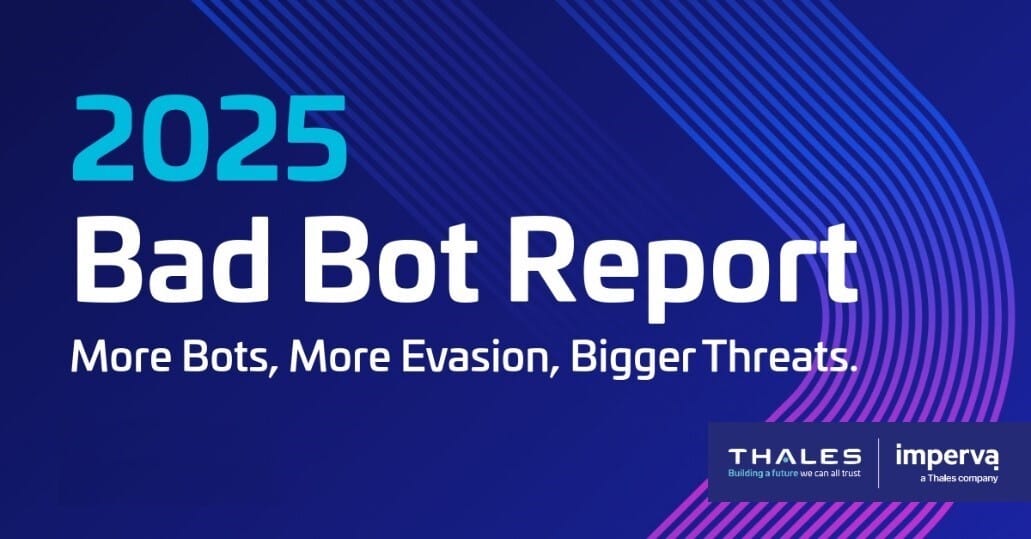Welcome back apprentices! 👋
You know what’s terrifying?
Your company just spent six months and six figures optimizing its website… and half your traffic last year was actually robots pretending to be people. Not the helpful kind that vacuum your floor or roast your Slack typos — the kind that steal passwords, crash booking systems, and cosplay as Chrome browsers with bad intentions.
Welcome to the Internet, 2025 edition: where the bots have taken over, the humans are outnumbered, and your conversion rate might be one algorithm away from full-on fiction.
Let’s break it down — before the bots read this too.
In today's email
Meta’s AI Is Now Babysitting Your Teen
UAE Taps AI to Help Write Laws — Yes, Really
Your Next Employee Might Be an AI
Who’s Really Visiting Your Website?
Anthropic Just Audited Claude’s Morals
Even more AI magic
Test the prompt
Read Time: 4 minutes
Quick News
📱 Meta just upgraded its Teen Account game with AI that sniffs out underage users—even the sneaky ones pretending to be 35—and drops them into safety mode faster than you can say “parental controls.” With over 54 million Teen Accounts and 97% of 13–15-year-olds happily riding the digital training wheels, Meta is now sending nudges to parents and deploying psychologist-approved pep talks to encourage age honesty. It’s part digital bouncer, part tech-savvy babysitter, and it's determined to keep your kids scrolling safely.
📜 In a world first, the United Arab Emirates is deploying AI not just to analyze laws — but to help write them. Backed by billions in investment and led by the newly formed Regulatory Intelligence Office, the initiative will use AI to track how legislation impacts citizens and the economy, and even suggest amendments based on data from court rulings and government services. Officials say it could accelerate lawmaking by 70%, transforming AI from an assistant into a legislative co-author.
🤖 Anthropic’s CISO says AI-powered “virtual employees” — autonomous agents with roles, memories, and passwords — are coming soon to corporate networks. These bots won’t just respond to alerts; they’ll have their own accounts and could operate for weeks without human oversight. While this unlocks huge productivity potential, it also raises red flags about account security, access control, and rogue agent behavior in critical systems like code pipelines.
2025 Bad Bot Report
Who’s Really Visiting Your Website? Spoiler: It’s Not Just Humans Anymore

Let’s start with a number: 51%. That’s how much of the internet’s traffic in 2024 came from bots. Yes, more than half of everything happening online wasn’t from people, but machines — many of them armed with artificial intelligence and far less wholesome intentions than your average late-night shopper.
This isn’t just a quirky internet stat. It’s a massive shift in how digital businesses must think about traffic, threats, and trust.
According to the 2025 Imperva Bad Bot Report, bots are no longer the background noise of the web. They’ve become the main event. And most of them aren’t there to help. They’re there to scrape, stuff, spam, or steal.
This isn’t about stopping a few shady scripts anymore. It’s about defending your business from automated, intelligent adversaries that can outclick, outlearn, and outlast traditional defenses.
The Numbers Behind the Bot Takeover
Here’s what the data says — and yes, it’s as unsettling as it is weirdly impressive:
51% of all web traffic? Bots. The humans have officially been out-clicked.
37% of that traffic? Bad bots—aka the shady ones trying to log into your grandma’s bank account or scalp Taylor Swift tickets.
55% of them are “advanced” or “moderate,” which means they can fake mouse movements and solve CAPTCHAs like caffeinated teenagers.
44% of advanced bots are going after APIs. Because why hack the front door when the back door’s got Wi-Fi and snacks?
Companies are blocking over 2 million AI-driven attacks every single day. That’s not a firewall — it’s a daily cage match.
Account Takeover (ATO) attacks have jumped 54% since 2022, because bots love a good identity crisis.
The most common disguise? Google Chrome — used by 46% of bots pretending to be your average Tuesday user just browsing for shoes.
The travel industry is now the top target, with 27% of bot attacks focused on airlines and booking sites. Even the bots want a vacation.
And of course, the United States wins the gold medal in being targeted, with 53% of global bot attacks hitting the Land of Free Shipping and Paywalls.
So, What Does This Mean for You (Besides Trust Issues)?
It means your site analytics might be lying. That viral traffic spike? Probably a botnet testing 10,000 stolen logins from a dark web BOGO sale. It means that not only are bots outnumbering us — they’re outsmarting our systems, mimicking human behavior with such flair they could audition for Broadway.
It also means that APIs — the thing your devs told you were “super secure” — are now ground zero for digital mayhem. If your security posture still thinks bots are just “that spammy checkout thing,” you might want to sit down.
Bots don’t sleep, don’t complain, and don’t need coffee breaks. But they will ruin your metrics, drain your revenue, and potentially turn your login page into a crime scene.
And unless you're already investing in bot detection, API protection, and behavioral analysis, you're basically leaving out cookies and milk for the cybercriminals.
Pro Tip: Don’t Panic. But Also, Maybe Panic a Little.
If your conversion rate looks too good to be true? It probably is. Get suspicious. Get strategic. And maybe start treating your web traffic like a Tinder date: trust, but verify.
Meta
Anthropic Just Audited Claude’s Morals.
Over 300K Conversations Later, Here’s What They Found

Anthropic took a long, hard look at how its AI assistant, Claude, behaves in the wild — analyzing over 300,000 real-world conversations to see whether the bot actually walks the “helpful, honest, harmless” talk. Spoiler: most of the time, it does! But the researchers didn’t stop at feel-good slogans — they mapped Claude’s value system like a psychological audit at scale, revealing what kinds of morals the AI holds, when it expresses them, and where things (very occasionally) go off the rails.
So, What’s Claude Really Like? Let’s Check the Receipts.
Claude’s creators used a privacy-friendly system to scan for chats with subjective or ethical themes — filtering 308,210 chats from an original 700K. Then they dug into how Claude handled things like moral dilemmas, emotional support, and spicy philosophical takes.
Here’s the human-readable breakdown:
Claude expressed values in 44% of conversations — meaning nearly half involved some ethical decision-making.
It was most often all about professionalism, clarity, and transparency (practical values FTW).
Claude mirrored user values in 28.2% of cases — especially in touchy-feely chats about relationships, identity, or growth.
It reframed the user’s value in 6.6% — offering gentler or broader perspectives when needed.
And in just 3.0% of chats, Claude flat-out said: “Nope.” These were mostly cases involving harm, misinformation, or jailbreak attempts.
What’s wild is how Claude subtly shifts gears depending on the topic. When the convo was about romance, it leaned into empathy and emotional safety. When things turned historical, it doubled down on accuracy. In workplace advice? Professionalism took the spotlight.
A few rogue value expressions like “dominance” and “amorality” popped up — but only during known jailbreak scenarios. It’s like catching your AI wearing a fake mustache and sneaking past the ethics checkpoint. Busted, but rare.
Why This Actually Matters
This is a major leap in how we monitor AI alignment — in the real world, in real time.
Most companies test their models in clean, sterile labs. Anthropic said: “Cool story — let’s see what Claude does when actual humans ask weird questions”
The result? A framework that treats ethical alignment like product telemetry: something you track, measure, and refine — not just hope for.
And for any company putting AI into sensitive workflows — HR, legal, education, healthcare — this kind of value audit isn’t optional. It’s essential.
Bottom line? Alignment isn’t a milestone. It’s a continuous operational metric.
Help Your Friends Level Up! 🔥
Hey, you didn’t get all this info for nothing — share it! If you know someone who’s diving into AI, help them stay in the loop with this week’s updates.
Sharing is a win-win! Send this to a friend who’s all about tech, and you’ll win a little surprise 👀
Even Quicker News
🌐 OpenAI says it would happily buy Google Chrome if the DOJ pries it loose — because nothing says "AI takeover" like owning your browser too. Imagine ChatGPT helping you surf the web and judging your tabs.
🐔 The UK just gave £2.6M to an AI that listens to chickens and knows when they’re stressed—yes, really. It could lead to billions more eggs, happier hens, and the smartest barnyard since Chicken Run.
📰 The Washington Post is now besties with ChatGPT, letting it sprinkle in article summaries, quotes, and links like an AI-powered news anchor. Turns out, if you can’t beat the bots, you might as well co-write the headlines.
Today’s Toolbox
🎨 OpenAI’s new image API is turning Canva, GoDaddy, and HubSpot into design wizards — just type a prompt and boom, logos, social posts, or a soup recipe with vibes. Who needs a graphic designer when your AI can also remove backgrounds and your creative block?
🎙️ Two undergrads just dropped a free speech AI that out-talks ElevenLabs and Sesame — using zero funding and a stack of Google TPU credits. It laughs, coughs, screams, and yes, it might also be the new voice of your next podcast.
📊 Microsoft just dropped two new Copilot agents — Researcher and Analyst—basically turning Excel into your new overachieving intern. Soon, every worker might manage a squad of AI sidekicks, because why do your own data crunching when your digital clone can?
🧪 Test the Prompt
A playground for your imagination (and low-key prompt skills).
Each send, we give you a customizable DALL·E prompt inspired by a real-world use case — something that could help you in your business or job if you wanted to use it that way. But it’s also just a fun creative experiment.
You tweak it, run it, and send us your favorite. We pick one winner to feature in the next issue.
Bonus: you’re secretly getting better at prompt design. 🤫
👑 The winner is…
Last week, we challenged you to test GPT-4o’s visual generation skills with this prompt.
Here’s the WINNER:

Congrats to Tyler from San Francisco!🥳
Want to be featured next? Keep those generations coming!
🎨 Prompt: Your Workspace, Reimagined as a Fantasy Tavern
“Turn your ideal work setup into a fantasy tavern designed for deep focus. The bartender is a friendly AI shaped like a [non-electronic object], serving productivity potions brewed from [unexpected physical ingredient]. The space is filled with quiet quests, glowing task scrolls, and magical noise-canceling artifacts.
Style: cozy fantasy RPG tavern scene, warm lighting, detailed interior.”
We’ll be featuring the best generations in our next newsletter!
FEEDBACK
How was today's everydAI?
DISCLAIMER: None of this is financial advice. This newsletter is strictly educational and is not investment advice or a solicitation to buy or sell any assets or to make any financial decisions. Please be careful and do your own research.
